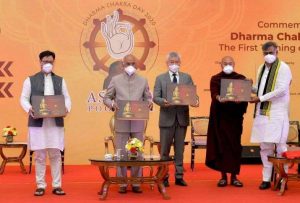
I first came across Pure Land Buddhism about five years ago, during a chance meeting of a Buddhist monk in Shanghai China.
I had at that stage of my life reached a depth of despair after a relationship break down. I was staying in a Shanghai hotel a few days before a return flight to Australia. I was in the dining area when the manager of the hotel came over to my table to ask in perfect English if I was enjoying my stay. I guess my countenance defied pretending that I was fine. Before long we were engrossed in conversation which quickly turned to Buddhism. The manager invited me to meet his “master”, who would be visiting Shanghai from Mt. Putuo. As I had a couple of days to spare, I decided to accept his invitation.
My meeting of Yan’s master became a turning point in my life and on returning to Australia I was determined to find out more about this Pure Land Buddhism, which up till that point I had never heard of. My subsequent journey into Pure Land Buddhism has been both incredible and enriching.

Perhaps like many people visiting China I had stepped inside many a Buddhist temple. Nonetheless Chinese Buddhism remained a mystery to me. Much of the mystery was due to the paucity of literature either in English or intelligible to my Western cultural mind set. It has only been in recent years that the Amitabha Association has tirelessly translated the work of Master Chin Kung into English and made available other Pure Land classics and sutras. Nonetheless it is still in its formation years as many of the masters in Mainland China are only now gradually coming to the fore.
There are many “schools” of Chinese Buddhism however the three most predominant are Tientai, Ch’an – known often by its Japanese name, Zen – and Pure Land. Of the three, Pure Land is perhaps the largest. This is not to say that the other schools of Chinese Buddhism are not important. They are as equally significant. It is just beyond the scope of this article to make mention of them all.
Pure Land Buddhism has at its centre faith in the Amitabha Buddha and that by being one in mind with the Amitabha Buddha, the Buddha of Infinite Light and Life, one is able to end the cycle of birth and death and attain birth in the Pure Land. It has often been stated that Pure Land Buddhism is a simple Buddhism; simple but certainly not simplistic. It is approachable, digestible and easy to practice for the busy person. It is easy to fit into many life styles.
In Pure Land Buddhism we speak of the three foundations of Pure Land: Faith, Vows and Practice. This faith is not the same as it is understood in other religions. It is not a blind or unreasoning faith. It is a faith that is founded upon wisdom. Wisdom gives faith its impetus. Without Wisdom faith becomes mere superstition and the practise becomes shaky and unreliable. It is through the thorough investigation of the dharma and sutras that we obtain wisdom. As we put into practice the dharma we begin to see results and these results are confirmed in our reading and understanding of the sutras. This gives a strong platform for faith. The faith then becomes firm and well evidenced knowledge of the ‘workability’ of the Dharma.
My friend’s master in Shanghai gave me some wise advice. “Try it out for yourself. Meditate and recite the Buddha’s name for three months, every morning for twenty minutes. After three months test the results. Then apply the same experiment for nine months and again test the results. Only then make your conclusions for yourself.” I later read the Kalama Sutra and read the very similar words of the Buddha. Faith is formed through rigorous inquiry and experiment grounded in Wisdom.
Two years ago when I came to Guang Jue Monastery in Zaoxi China I was moved by the story of the abbot Master Zheng Rong. When he first came to Zaoxi the temple was in almost complete ruins as a result of war many years before. He arrived without money and without support yet he had an inner knowing and faith that he could rebuild the monastery. “I did not think of how I was to rebuild the temple. I simple thought I was practising the dharma of Amitabha. When you practise with faith you become one with the Buddha. When you are one you do not need to worry about results. This is the faith of our tradition.”
I could not help but think about my own life and rebuilding it. Many of us come to a point in our lives when there seems to be the debris and ruins of our past ignorance and actions. Pure Land Buddhism gives us a faith built upon the wisdom of the Dharma to begin the building project. We don’t need to worry about results.
Ten years later a humble monastery stands in Zaoxi. Pure Land is not far from each of us as we vow to make it happen, practice diligently and move forward with faith.






